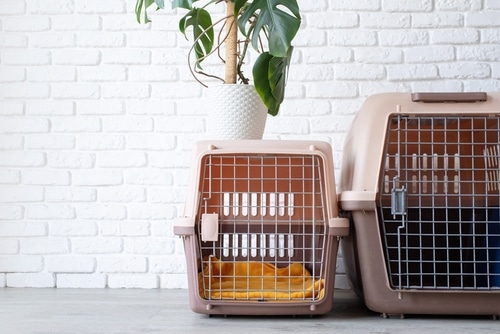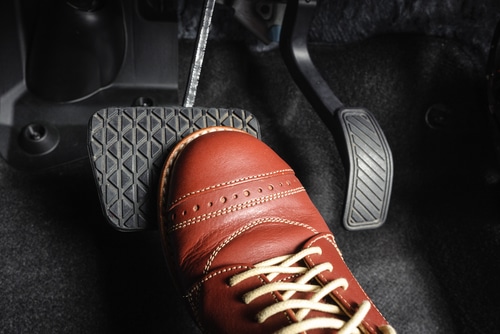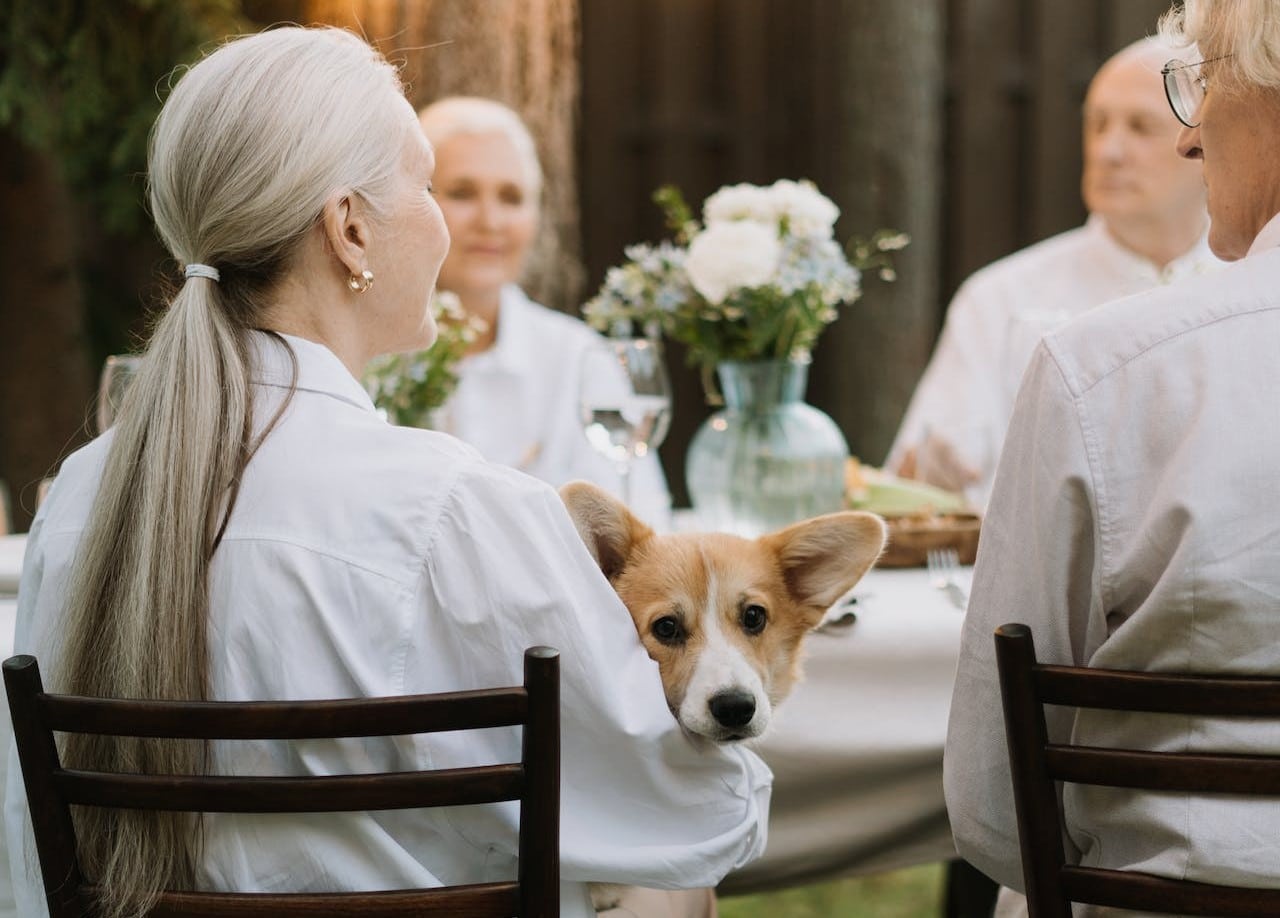Home » Blog » Pet » Pet Health & Safety » Dog Crate Sizes: How to Pick the Right One
Categories
Tags
animal welfare
breed profile
buying a car
buying a pet
Car
car accessories
car care
car features
car insurance
Car safety
car sales
car service
cat
cat behaviour
cat body language
Cat Breeds
cat food
cat insurance
comprehensive car insurance
Dog
Dog Behaviour
dog body language
Dog Breeds
dog food
Dog Insurance
dog training
eco friendly cars
Kitten
New Car
pet accessories
pet activities
Pet Adoption
pet breeders
pet days of the year
pet fun stuff
Pet Health
pet insurance
pet parenting
Pet Safety
pet services
Puppy
rescue pets
road safety
road trip
safe driving
Recent Blog:
Facebook Posts
1 day ago
Growing old sometimes means we can’t take care of pets anymore. Find out some advice on what to do when this happens:![]()
![]() Senior Pet Parents – Contingency Plans for Your Pet – bit.ly/44bzwkS
... See MoreSee Less
Senior Pet Parents – Contingency Plans for Your Pet – bit.ly/44bzwkS
... See MoreSee Less
Senior Pet Parents' Contingency Plans for Pets
www.pd.com.au
Sometimes senior pet parents need more downtime. For older pet owners, this can be tricky to navigate if their dog or cat is full of beans and wants to3 days ago
Before you rev up the engine, let’s run through a checklist of things to do before starting your car. Not only do these steps ensure your safety (and that of others around you), but they also help in maintaining your vehicle's longevity.![]()
![]() Driving Tips: Your Checklist Before Starting Your Car -
... See MoreSee Less
Driving Tips: Your Checklist Before Starting Your Car -
... See MoreSee Less
Driving Tips: Your Checklist Before Starting Your Car
www.pd.com.au
Heading out for a drive? Hold up a second! Whether you're dashing off to work, running errands, or embarking on a road trip adventure, there are a few1 week ago
Are intestinal worms setting up camp in your dog’s gut without paying rent? Here’s how to spot the main culprits and get rid of them too:![]()
![]() Preventing, Identifying and Treating Intestinal Worms in Dogs - bit.ly/43YjCKu
... See MoreSee Less
Preventing, Identifying and Treating Intestinal Worms in Dogs - bit.ly/43YjCKu
... See MoreSee Less
Preventing, Identifying and Treating Intestinal Worms in Dogs
www.pd.com.au
Intestinal worms, such as roundworms in dogs are one of the least glamorous topics on the planet. These intestinal parasites that basically use our dogsPondering the right dog crate size? Take your time – your pup’s crate is more than just a box with bars. It’s their personal den, their safe space where they can relax, unwind, and feel secure when you’re not around. So, how do you make sure you’re choosing the right size?
Whether you have a tiny Chihuahua or a majestic Great Dane, we’ve got the scoop on how to ensure their crate feels like home, sweet home.
In this article
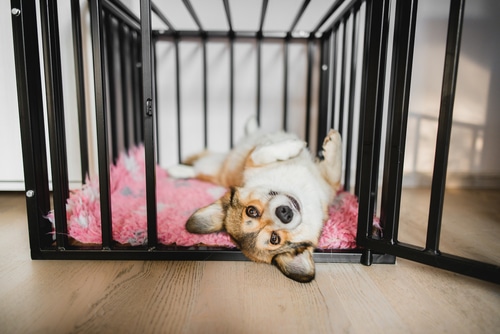
What crate size should I get my dog?
Before we dive into our dog crate size guide, we’ve written some valuable content on crate training your puppy, with two must-read articles you can check out below:
- Should You Crate Train a Puppy? (part one)
- Crate Training a Puppy (part two)
We also have information on how to manage a dog on crate rest.
But before you can even put your pup in a crate, it’s important to know what crate size to get them. Depending on brand, dog crates may come in up to six sizes, though they typically have the following dimensions:
| Size | Length | Width | Height |
| Small | 60cm | 45cm | 50cm |
| Medium | 75cm | 50cm | 60cm |
| Large | 90cm | 60cm | 65cm |
| XL | 105cm | 70cm | 80cm |
| XXL | 120cm | 75cm | 80cm |
So which size is right for your pup? Here’s a dog crate size guide to help you:
- Small crate – Suitable for Dachshunds, Chihuahuas, or Yorkshire Terriers
- Medium crate – Suitable for French Bulldogs, Pugs, or Jack Russells
- Large crate – Suitable for Cavalier King Charles Spaniels, Corgis, or Beagles
- XL crate – Suitable for Border Collies, Spoodles, or Labradors
- XXL crate – Suitable for German Shepherds, Boxers, or Bullmastiffs
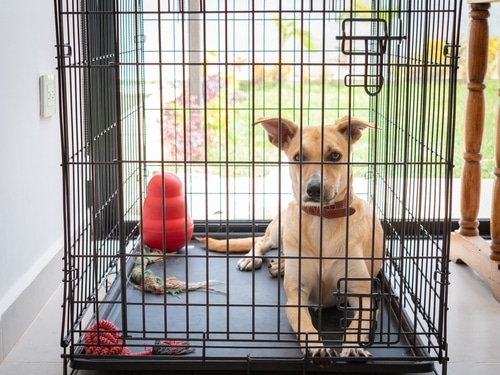
Measuring your dog for their crate
If you’re still not sure what size dog crate to get, first measure your pup. Once you have their measurements, add 10cm to the height and length to ensure they have enough room to stand up, turn around, and lie down comfortably.
To take your pet’s dimensions, grab a tape measure and note down:
- Length: Measure from the tip of their nose to the base of their tail.
- Height: Measure from the top of their head to the ground. If your dog has erect ears, measure from the tip of the ears instead.
- Width: Although you won’t find crate sizes based on width, knowing your dog’s shoulder width can help ensure they can turn around comfortably.
Dog crate size and type
When buying a crate, you may also want to consider the material you choose. Here are some common types:
- Plastic crates are great for travel and provide a cozy den-like area for your dog. They’re slightly more enclosed, so make sure there’s enough ventilation and room for your dog to move around.
- Metal wire crates are more open, allowing for better airflow and visibility for your dog. They can be more flexible in terms of space, as many come with a divider that lets you adjust the size as your puppy grows.
- Soft-sided crates are lightweight and portable, ideal for small, calm dogs. They might not be the best choice for puppies or dogs who like to chew.
Think about your dog’s growth
Here’s a biggie – remember that if you’re crate training a puppy you need to consider their adult size. It’s more economical to buy a crate that fits your dog once they’re fully grown. You can use dividers for your puppy to adjust the size as they grow.
Remember: When in doubt, go bigger. If you’re stuck between two sizes, go for the larger one. You want your dog to have a space that’s safe and comfortable, not tight and stressful.
However, too large a crate might give your puppy too much space and could hinder house training, as they might designate a corner of the crate for potty breaks.
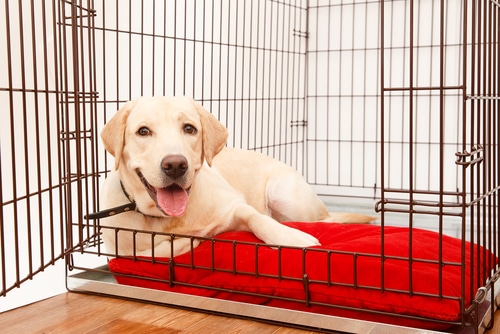
Watch for special needs
Some dogs have special needs that need to be catered for. For example, dogs with anxiety might prefer a more enclosed crate for a sense of security, while older dogs with arthritis might need extra space to stretch out comfortably.
In short, think about your dog’s comfort, their size now and in the future, and the crate’s purpose (like travel or house training). A well-sized crate is a safe haven for your dog, so taking the time to choose the right one is definitely worth it!
Dog crate size guide FAQ
And now to answer some of Australian pet parents’ most burning dog crate size questions:
Q: Should I buy a crate for my dog’s current or adult size?
As mentioned earlier, it’s more economical to buy a crate for their expected adult size than their current puppy size. Just don’t go too big.
Buy a crate that matches your dog’s expected adult size and then use the divider to make the crate smaller while they’re still growing. It’s like buying clothes with a bit of “grow room” for a quickly growing child.
Q: How do I know if my dog crate is too small?
Wondering if your dog’s crate might be too small? Here are some tell-tale signs to look out for:
- Can’t stand up straight: If your dog can’t stand up without their head touching the top of the crate, it’s a sign the crate is too small. They should be able to stand up comfortably without needing to duck or crouch.
- Trouble turning around: Your dog should be able to turn around easily inside the crate. If they’re doing a tight shuffle or seem to struggle to get turned around, then the crate is too cramped.
- Can’t stretch out: When lying down, your dog should be able to stretch out fully. If they can’t extend their legs out without hitting the sides of the crate, it’s too small. They should be able to lie on their side with legs extended and feel comfy.
- Squished when sitting: If your dog seems squished or uncomfortable when sitting down, with their knees bent awkwardly or unable to relax fully, the crate isn’t giving them the space they need.
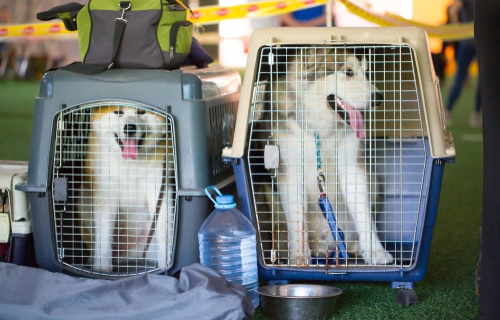
Q: How do I know if my dog crate is too big?
And now for the opposite – a too-big crate. Here are some signs:
- Too much pace: Does your dog pace back and forth a lot in the crate? While some pacing is normal, especially if they’re settling down, a lot of it might mean the crate feels more like an open field than a secure, snug spot.
- The echo test: Okay, not a real test, but if the crate looks empty even with your dog in it, it’s a sign it might be too spacious. Your dog should have enough room to stand up, turn around, and stretch out, but not so much that it feels like they’re rattling around in there.
- Avoiding certain areas: If your dog only ever occupies a small part of the crate and ignores the rest, it could be a sign that they’re trying to make the space feel smaller and more secure on their own.
- Security issues: A crate that’s too big might not feel safe to your dog. Dogs like cozy spaces because they feel more secure, kind of like how a den works in the wild. If the crate is too spacious, they might not use it as much or seem anxious about it.
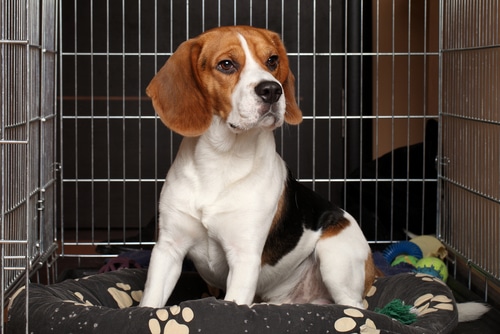
Insurance for your pawsome pup
We hope we’ve helped you with our dog crate size guide.
Now for something else that’s super important: dog insurance. Having it can help pay towards the costs of surgery, X-rays, bloodwork, hospitalisation, stayovers at the vet clinic and much, much more after an accident or during illness.
PD Insurance gives you one or more months of FREE pet insurance when you buy your pawlicy. Click below and get your quote today.
Share On:

